Culture
Adornment With Purpose: The Cultural And Spiritual Stories Behind Hindu, South Indian Bridal Jewellery
Adithi Gurkar
Dec 15, 2024, 03:38 PM | Updated Dec 20, 2024, 05:56 PM IST
Save & read from anywhere!
Bookmark stories for easy access on any device or the Swarajya app.
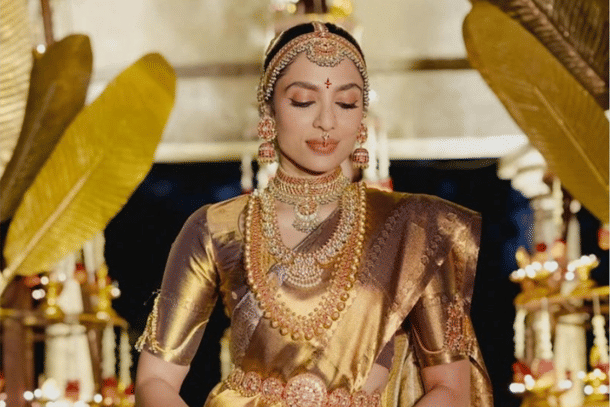
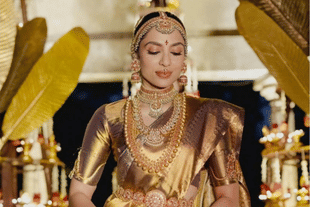
As the wedding season of 2024 draws to a close, the internet is flooded with captivating pictures of celebrity nuptials. In the south of India, a symphony of sartorial splendour unfolded, with Shobita Dhulipala in an ethereal golden drape, while Keerthy Suresh exuded regal elegance in a resplendent Madisar saree.
However, it was the exquisite ornaments they adorned that truly elevated their attire, lending it that unmistakable je ne sais quoi. This is because every piece of jewellery worn by a Hindu South Indian bride holds profound religious and spiritual meaning, some of which are detailed below.
The Surya and Chandra
An iconic feature of South Indian bridal jewellery, the Surya (Sun) and Chandra (Moon) are celestial symbols worn on either side of the bride’s head. These ornaments embody the delicate balance between opposing forces. The Sun, representing life, energy, and power, contrasts with the Moon, symbolising gentleness, grace, and beauty.
Historically, these celestial symbols were integral to temple jewellery and were used to adorn deities. Over time, they became a part of the bridal trousseau, especially in the context of Bharatanatyam dancers. Their roots trace back to the Chola Empire (9th to 13th century), where the Sun and Moon would often adorn the crowns and helmets of kings.
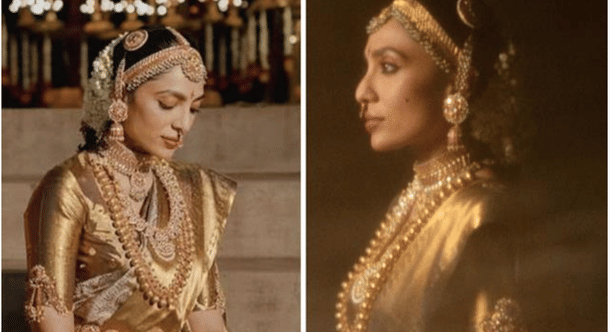
As jewellery techniques evolved, these symbols were crafted using precious materials such as gold, silver, diamonds, rubies, and emeralds. The Sun is typically represented by a circular design, while the Moon takes the form of a crescent. In modern times, designers like Masaba Gupta have reinterpreted these ancient symbols, adding a contemporary flair.
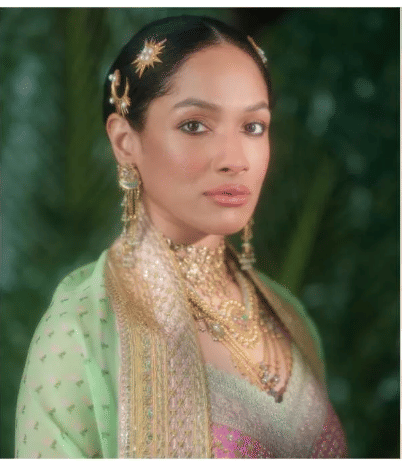
Nethi Chutti
Another staple of South Indian bridal attire, the Nethi Chutti is the equivalent of the Maang Tika worn in other parts of India. This pendant is placed at the centre of the bride’s forehead, which is believed to be the location of the sixth chakra, or the “third eye.”
In Hindu mythology, the third eye symbolises a person’s capacity for self-control, intuition, and emotional fortitude, making this ornament not just an aesthetic accessory but a representation of spiritual strength
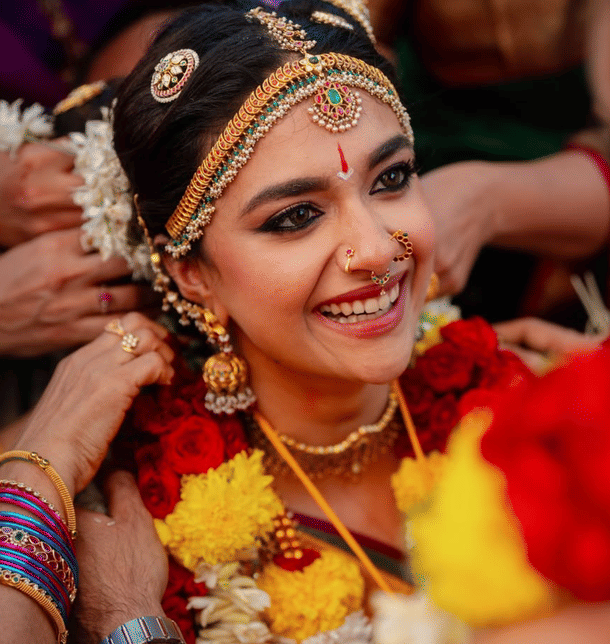
Andal Kondai
The Andal Kondai refers to the traditional hairstyle where the hair is gathered into a bun. The positioning of the bun holds significance, revealing whether the woman is an Iyer or an Iyengar. For Iyer women, the bun is placed at the centre of the back of the head, while for Iyengar women, it is slightly off-centre, positioned to the right and a bit forward.
In Tamil Nadu, the Andal Kondai carries deep spiritual meaning, representing the devotion and love of Andal, a saint and poetess dedicated to Lord Vishnu. As an incarnation of the goddess Lakshmi, Andal’s devotion is celebrated through Bharatanatyam performances, where dancers wear the Andal Kondai during compositions dedicated to her.
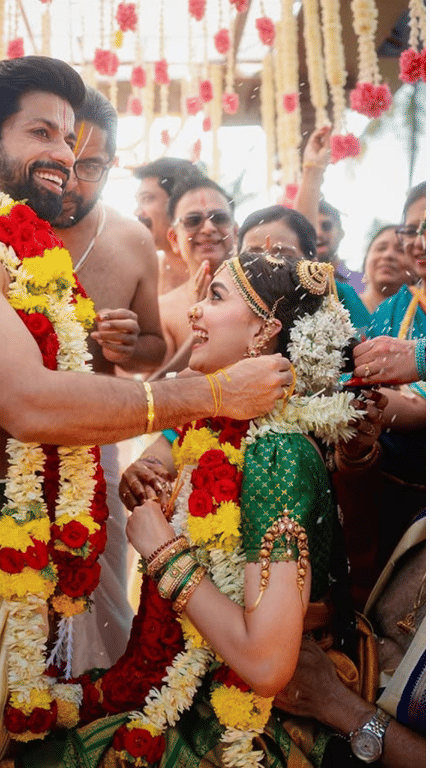
Vanki
The Vanki, a distinctive arm ornament, has its origins in the worship of Nagadevatas (serpent deities). Its design resembles the raised head of a snake, symbolising the connection between Lord Vishnu and Adi Shesha, the cosmic serpent.
The Vanki is believed to offer protection against negative energies and evil spirits. In Telangana, it is customary for the bride to receive a Vanki during the Pradhanam ceremony, a Telugu wedding ritual where a gold ring is hidden in a pot of milk and rose petals. The bride and groom then compete to find the ring.
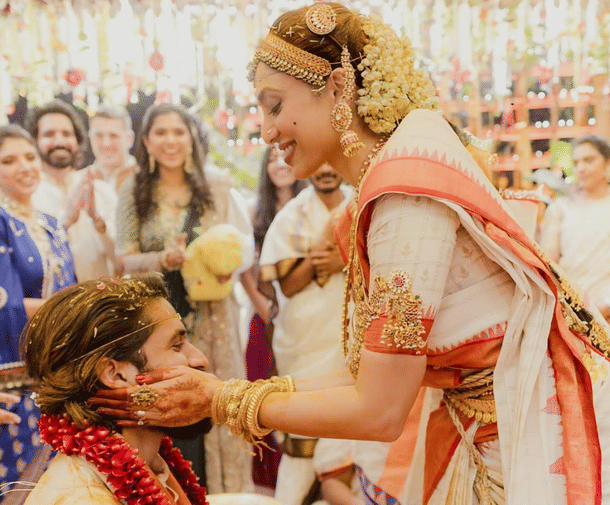
Mango Mala
The Mango Mala holds special importance in South Indian weddings, particularly due to its association with fertility and prosperity. Mango leaves are strung together to form a garland or toran, traditionally hung at the entrance of temples and wedding mandaps to ward off evil spirits.
In Hinduism, Lord Shiva and Kama, are symbolised by mango leaves, linking the garland to fertility, love, and auspiciousness. The Mango Mala worn by the bride extends this symbolism.
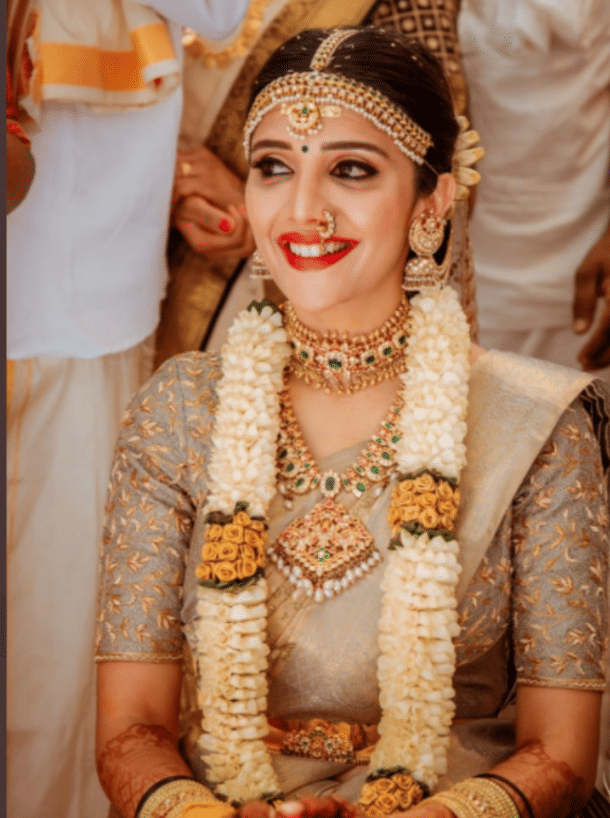
Kasina Sara
The Kasina Sara is a gold chain made of small coins, often engraved with images of the goddess Lakshmi. The term “Sara” translates to a chain or maala. This piece of jewellery is highly cherished by brides as it symbolises good fortune, prosperity and abundance, making it not only a decorative piece but a harbinger of blessings.
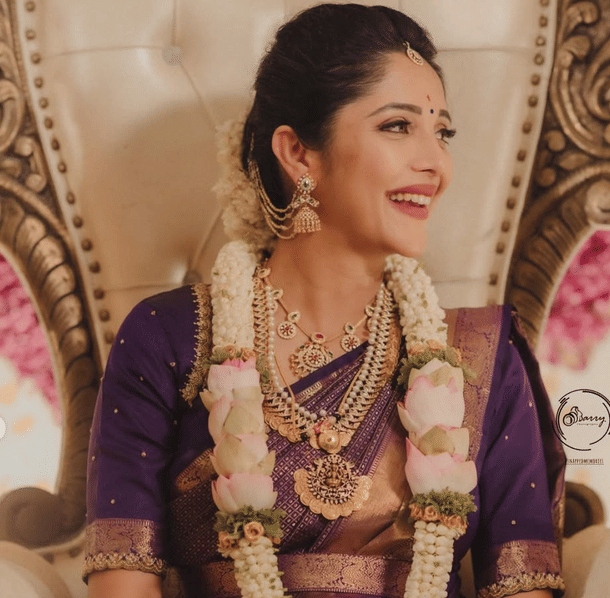
Thaali Sara
In Tamil Nadu, the Thaali holds deep cultural significance and comes in various shapes, designs, and sizes, with different forms representing different castes and sub-castes. Traditionally, the Thaali is worn with a gold chain or Manja Kayiru (a yellow thread) and often carries symbols of the family deity—such as Goddess Meenakshi, Lord Sundareshwara, or Lord Shiva.
The groom’s family typically presents this sacred pendant, sometimes accompanied by gold coins, corals, and other sacred items. It is an essential symbol of marriage and the sacred bond between the couple.
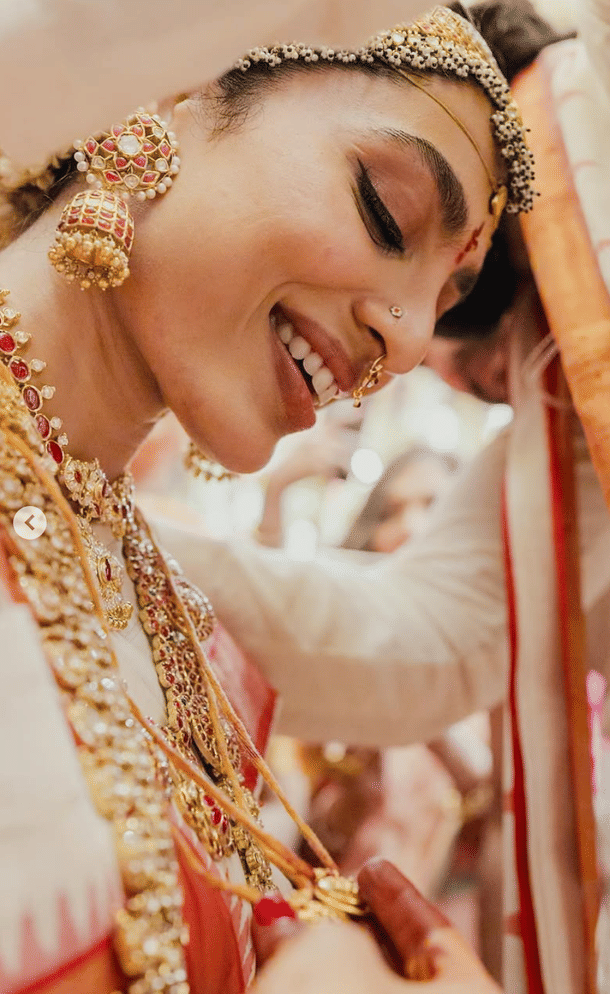
Toe Ring
The Toe Ring, known by different names across South India—Metti in Tamil, Mettelu in Telugu, and Kal-ungura in Kannada—is another key ornament signifying matrimony. Ancient Indian belief holds that a person’s prana or life force flows through the toes, and wearing a toe ring helps to balance and protect this vital energy.
Like many other elements of bridal jewellery, the toe ring symbolises the woman’s married status and is a spiritual tool to maintain physical and emotional health.
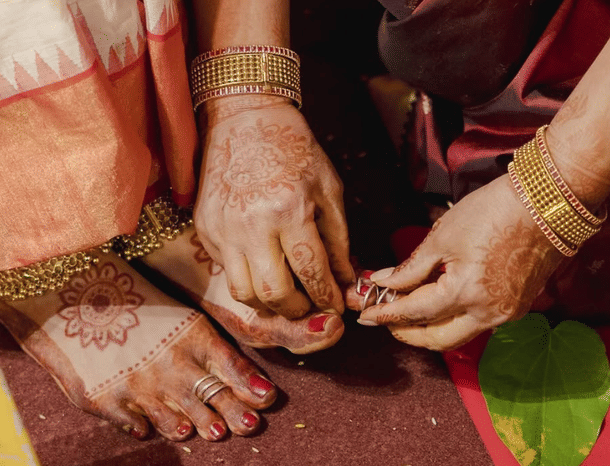
As we reflect on the intricate beauty and cultural significance of South Indian bridal jewellery, it becomes clear that these pieces are not just adornments but symbols of profound spiritual and cultural heritage.
Each ornament, from the celestial Surya and Chandra to the protective Vanki and the auspicious Mango Mala, carries a story, a blessing, and a deep connection to tradition. These jewellery pieces are a testament to the timelessness of South Indian bridal customs.
As modern brides continue to embrace these sacred symbols, they carry forward a legacy that honours both their ancestors and the divine.
Adithi Gurkar is a staff writer at Swarajya. She is a lawyer with an interest in the intersection of law, politics, and public policy.





